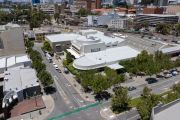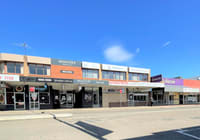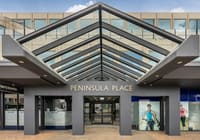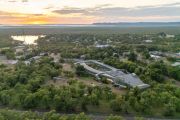
B-grade moves to the top of the class
Investors in lower-grade office space in Sydney’s CBD are enjoying a major boost in their fortunes as a result of the dramatic shortage of supply.
With the compulsory acquisition of many of the buildings by the State Government for the Sydney Metro project, and others being redeveloped into apartments and hotels, capital growth in the remainder has increased as a result by as much as 54 per cent in the last three years, and rents soared by up to 30 per cent.
“We’re seeing very strong demand for B-grade office space and limited supply,” says David Cannington, head of research and strategy at Investa Property Group, which bought the 26-level building at 6 O’Connell Street in June 2014, refurbished it and at April 30, 2017, saw it independently valued at $223 million, a growth in value of 65 per cent. In just the last 10 months, from June 30, 2016, it increased around 22 per cent.
“So estate managers are looking at how they can get the most value of their assets, and repositioning them for that space. For that building, we also repositioned the retail offering and added some leading restaurants like Hubert and Balcon by Tapavino.”
B-grade office space – generally under 800 square metres, older, generally higher rise and with less expensive fitouts and fewer lifts – currently makes up 27 per cent of the total office net leasing area in the Sydney CBD, with around 190 buildings out of a total of roughly 500. Tenants tend to be in business services, or lawyers, architects, engineers and management consultants.
The office market in Melbourne wasn’t as strong, and those in Brisbane and Perth were markedly weaker.
But in Sydney’s CBD, lease transactions on sub-800-square-metre B-grade office suites outnumbered larger tenancy deals, including whole floors, at 73 per cent of total office deals last year, on Colliers International figures.
The current B-grade vacancy rate, at 4 per cent, is now the lowest of the last nearly 10 years, says Tom Buxton, Colliers International’s director of office leasing.
“Rents have also gone up 20-30 per cent and incentives being offered, like rent-free periods, cash contributions to a fit-out or free parking, are down.
“We’re also seeing this market is the hottest in the fit-out space with a lot more owners now putting in speculative fit-outs to attract higher rents. Some of the rents are now making it almost as affordable for companies to go into higher A-grade or premium buildings which are now offering higher incentives and have more vacancies.”
Certainly, the rental gap has closed significantly. Eighteen to 24 months ago, rents per square metre for B-grade space were an average of $600-$700 gross; today they’re anywhere from $860-$1000, says Buxton. A-grade offices by comparison are now around $900-$1300 gross, and premium $1100-$1600.
To keep competing with those higher grades, the jump in B-grade rents is now giving many owners the opportunity to upgrade their buildings, says Colliers International’s senior executive office leasing Oliver Archibald.
“Many are refurbishing foyers and adding shower facilities, lockers and bike racks,” he says. “That’s to compete with higher grades or to try to uplift rents. The lack of supply will continue until 2021/2 when a lot more supply of B-grade offices will come online.”
Tenants of those B-graders will probably find it tough-going even past then, says Mark Lockwood, director of transaction management at Tenant Representation Services, as when those buildings are pulled down, they’re rarely replaced with others of the same standard.
“Businesses’ second-largest cost, after wages, is property so many are look at ways of operating more efficiently using less space, with activity-based working, or employees working from home,” he says. “It’s important for B-grade tenants to think laterally and be proactive when rent rises are so high.”










